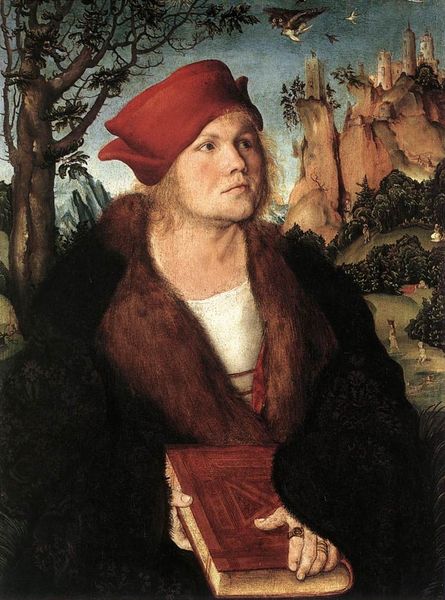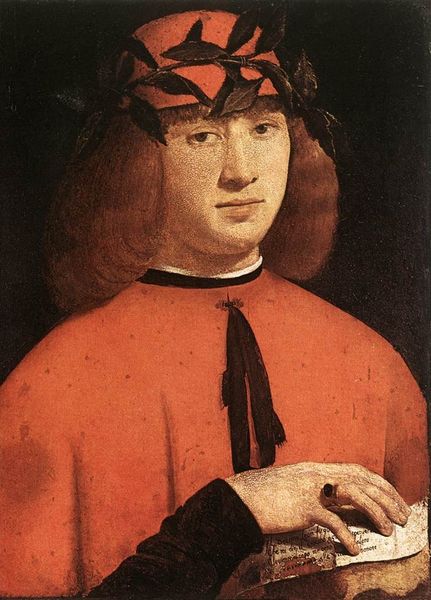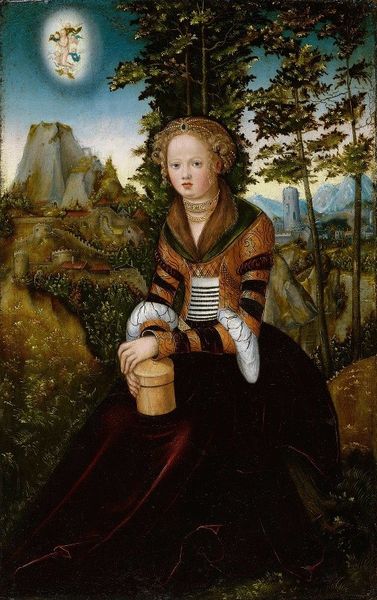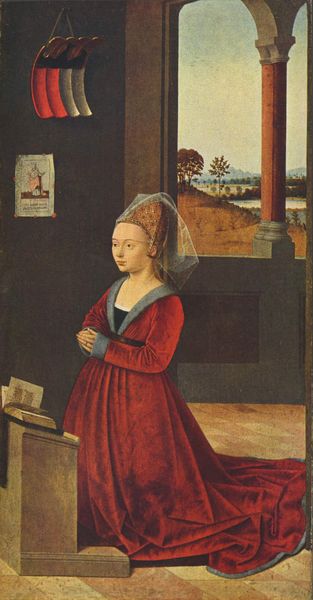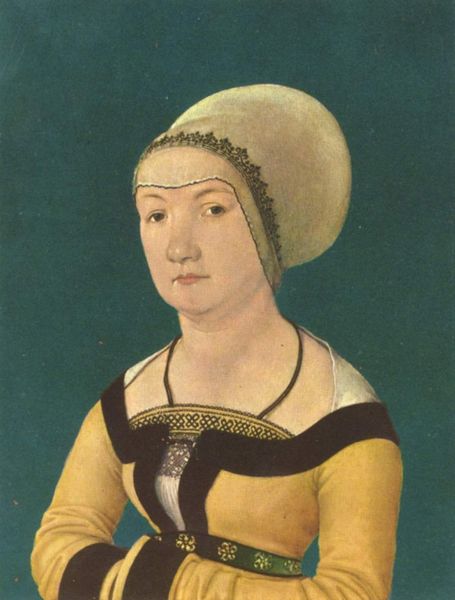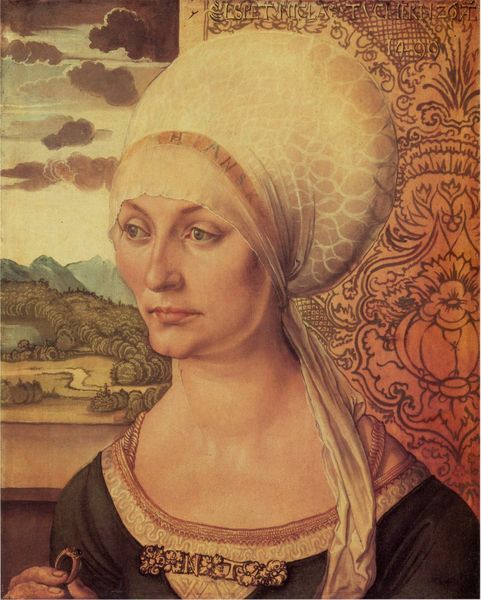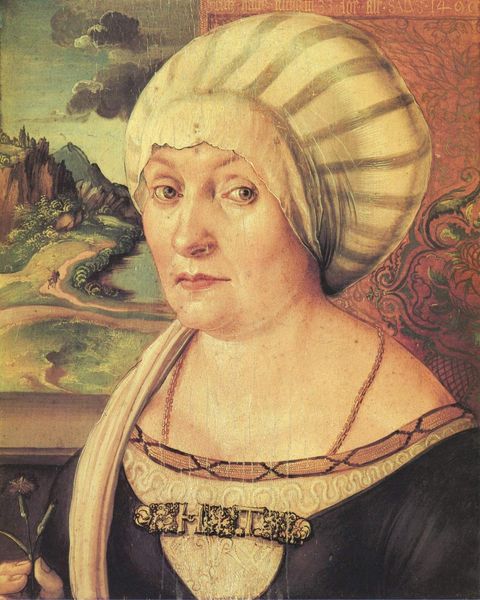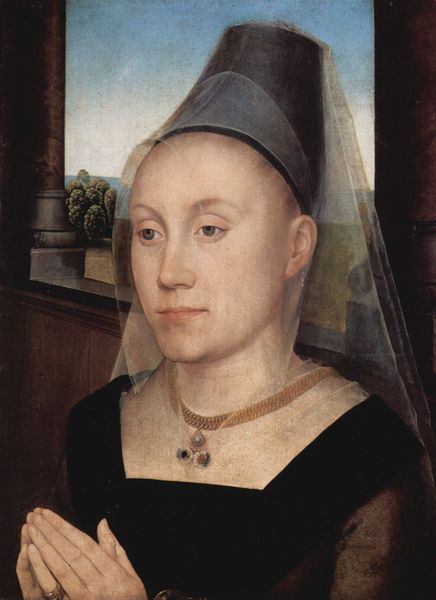
painting, oil-paint
#
portrait
#
painting
#
oil-paint
#
landscape
#
oil painting
#
northern-renaissance
Dimensions: 59 x 45 cm
Copyright: Public domain
Curator: Here we see Lucas Cranach the Elder's "Anna Cuspinian," an oil on canvas created in 1502, now residing at the Oskar Reinhart Foundation in Winterthur, Switzerland. Editor: The first thing that strikes me is the juxtaposition of the woman's serene, almost melancholic expression with the elaborate detailing of her clothing and the wild landscape behind her. There's a real sense of quiet wealth and contained emotion. Curator: Absolutely. Cranach was court painter to the Electors of Saxony, so he certainly moved within circles of power. This portrait exemplifies the early Northern Renaissance style, where precise detail and symbolism were crucial. Anna, wife of the Viennese humanist Johannes Cuspinian, is depicted with signs of her social standing. Editor: And those are pretty clear—her clothing isn't just about beauty, it's a social declaration. Those rings, the intricately embroidered dress, the unusual headpiece, all announce her status. It's fascinating to consider the politics embedded in such personal portrayals, especially as we think about the limited agency women held at the time. Did she choose how she would be presented, or was that determined by societal expectations? Curator: Likely a negotiation of both. Her gaze avoids ours; she's contained, perhaps contemplative. It would be naive not to see this work as shaped by broader Renaissance Humanist ideals of female beauty but we cannot disregard the complex set of relations—patriarchal as they may be—between artist and sitter at that time. It really speaks to the constraints and expectations placed upon women of her class. Editor: Yes, the painting certainly operates as a marker of status, but I find her apparent sadness intriguing. Even in a moment of such idealized representation, is Cranach revealing something of the internal life of a woman living in a very specific time and place, grappling with what her position demands of her? Curator: That's certainly one compelling reading. Ultimately, Cranach provides a fascinating glimpse into the world of the early 16th century and the place of portraiture in reinforcing social structures. Editor: Precisely! Considering portraits like this offers a poignant commentary on visibility, power, and the complex negotiation of identity throughout history. It challenges us to see these not as frozen, objective records but as contested sites where social expectations, individual personalities, and artistic interventions converge.
Comments
No comments
Be the first to comment and join the conversation on the ultimate creative platform.

